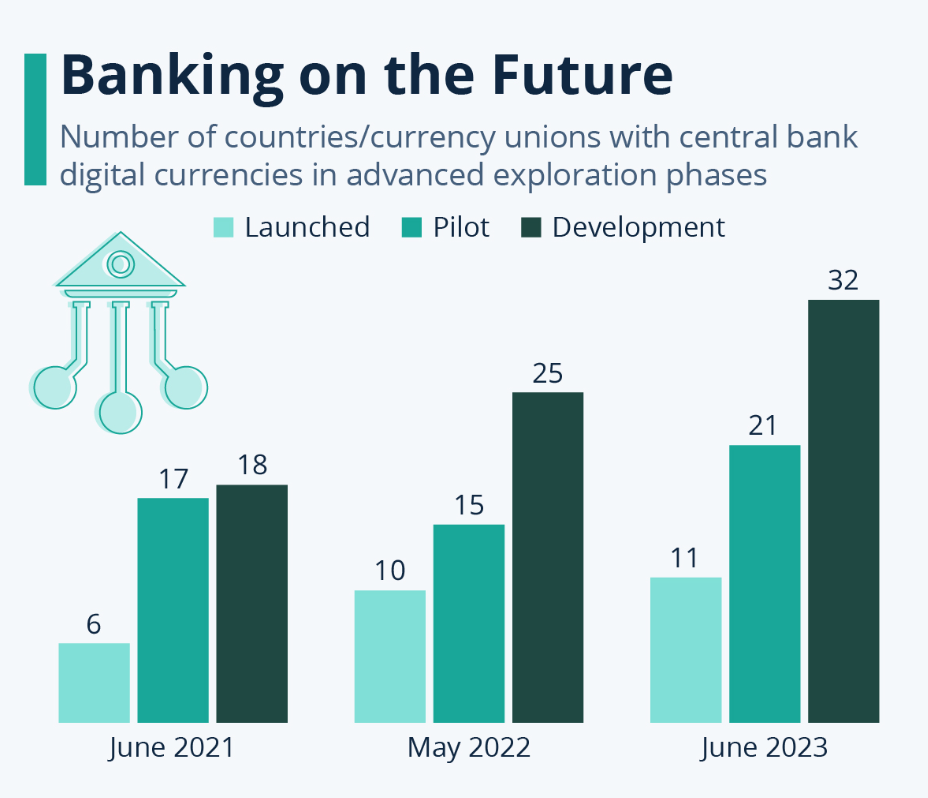- Crypto ownership rates average at 4.2%, with over 420 million global users
- Currently, there are over 20000 active cryptocurrencies cumulatively holding over $1 trillion in value
- Thirty-three new cryptocurrencies are created every week.
The evolution of money from barter exchange, gold, and copper coins to contemporary paper bills underscores the dynamic nature of currencies throughout history. Just as the transition from one form of currency to another has been a constant, the belief that cryptocurrencies will surpass traditional paper bills is gaining momentum.
A recent analysis by BanklessTimes.com indicates that nearly 20% of respondents worldwide envision cryptocurrencies as the future of money.
Crypto analyst Alice Leetham from the same site notes:
BanklessTimes crypto analyst, Alice LeethamThe increasing acceptance of crypto within our financial systems has significantly contributed to fostering the belief in a futuristic crypto-dominated world. The persistent growth of the crypto space attracts numerous users, offering enhanced asset control and broader accessibility. However, it’s crucial to acknowledge that the crypto space is still in its infancy, and many individuals are yet to grasp its full intricacies
Global Crypto Perception in Numbers
Efforts by crypto companies and advocates to raise awareness about crypto and blockchain technology have been fruitful, with approximately 92% of respondents having heard about crypto. 50% of this number possess a solid understanding of its functioning and integration.
The heightened awareness has led to a shift in perceptions, with over 15% now considering crypto as the future of money, 11% viewing it as a viable alternative to the traditional financial system, and another 11% seeing it as the future of digital ownership.
However, some still need to get acquainted with the new crypto concepts like NFTs. 76% of respondents in the UK have never owned an NFT, and about 24% in Vietnam. Not to mention, only 8% are familiar with Web3 concepts globally.
Understanding Digital Currency
Digital currency, exclusively available in electronic form, stands apart from existing electronic currency in bank accounts as it never takes physical form. It operates solely within computer networks, exchanged digitally. The three primary types of digital currency are cryptocurrency, stablecoins, and central bank digital currency (CBDC).
A closer look at CBDC reveals it as a digital currency issued and overseen by a country’s central bank, analogous to Bitcoin but under the management of a nation’s central authority.
More than 100 countries are exploring CBDCs, with only a handful having concrete plans or implementations.

The Potential of CBDC
The advantages of CBDC include functioning like physical cash, providing irrevocable transactions, and being recognized as legal tender. If adopted in the U.S., CBDC could revolutionize the financial system, allowing for instant, irrevocable transactions and making it legal tender for all economic activities.
However, the path to CBDC implementation involves careful consideration, with research projects like Project Hamilton exploring the technical challenges and opportunities associated with CBDC.
Future Outlook and Considerations
While the future adoption of digital currencies remains optimistic, challenges persist, including the need for simplicity, accessibility, and industry input.
As the global landscape explores digital currencies, the potential benefits of faster payments and reduced international transfer costs highlight the transformative possibilities. However, concerns about too many digital currency options, a steep learning curve, transaction costs, price volatility, and the slow progress of a U.S. CBDC underline the complex journey ahead.
Investing in CBDCs mirrors holding a nation’s physical cash, and while the concept is currently hypothetical, ongoing research and exploration suggest promising potential. As digital currencies evolve, the financial landscape may shift significantly, with endless possibilities.













